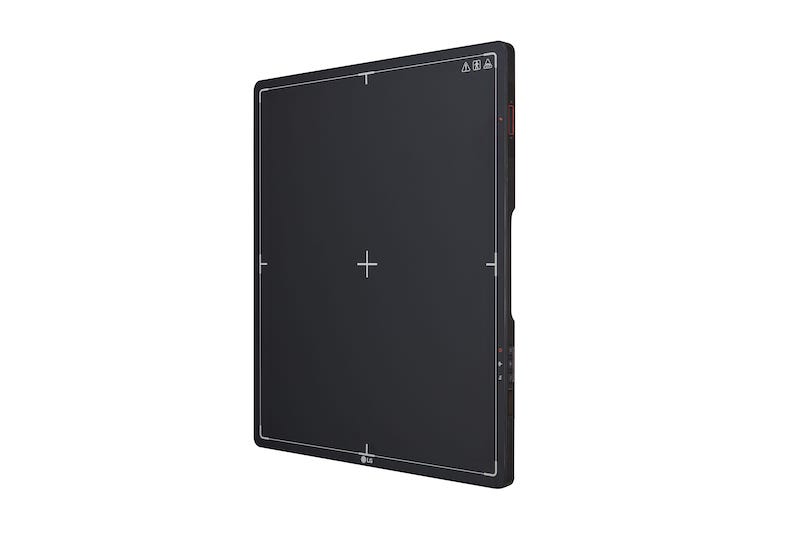LG Business Solutions USA has unveiled two new products: a new oxide-based thin-film-transistor Digital X-ray Detector (DXD) and a 21-inch 3MP diagnostic monitor.
The wireless 14-x17-inch DXD will utilize a new oxide-based thin-film transistor (TFT) design to deliver high Detective Quantum Efficiency, while the 21-inch diagnostic monitor will introduce localized brightness control to optimize radiological image review, analysis and diagnosis.
The new devices were unveiled at the 2021 annual meeting of the Radiological Society of North America, and both models are on display in LG’s RSNA booth.
The new LG DXD features electron transfer speeds almost 30 times faster than a conventional a-Si TFT. By increasing the Csl thickness of the 14HQ901G from 300um to 500um, LG has also improved the DQE of the new oxide-based TFT by 28 percent at 1 lp/mm, compared to 14HK701G. This DXD also will provide a robust design with concave edges and convenient grips built to withstand a 1.5 meter drop.
The new DXD model is expected to feature LG Acquisition Workstation Software version 3.0, which can analyze X-rays then inform the medical provider of any abnormalities and provide an abnormality score with a colored heat map or contour that marks any lesions detected. Images sent directly from the DXD to a connected workstation with LG Acquisition Workstation Software version 3.0 would be viewed within seconds, allowing users to obtain X-ray images with ease.

The 3-megapixel, 21.3-inch high-brightness diagnostic monitor will feature advanced localized brightness control and resolution of 1536 x 2048 pixels for displaying radiological images. The 21HQ513D-B IPS display is designed to facilitate precise review of MRI and CT images through focus view, allowing users to review specific parts of an image more closely with magnification and brightness adjustment.
The portrait-oriented monitor is designed to provide max brightness of 1100 nits with an 1800:1 contrast ratio to enable precise review of digital images while helping to illuminate abnormalities. LG also designed the monitor with multiple sensors to help ensure an optimized diagnostic environment regardless of room conditions.
The backlight sensor will automatically adjust luminance to stabilize brightness for consistent imagery, while the auto luminance sensor will help ensure screen brightness is optimized for the ambient lighting conditions. The built-in presence sensor automatically turns off the display when no motion is detected, saving energy and extending the monitor’s lifespan. Finally, the front sensor will enable automatic hardware calibration without additional equipment, which improves image quality and consistency while reducing required staff and ongoing costs.
LG designed the monitor to have a lightweight body and one-click ergonomic stand.
Featured Image: The 21-inch 3MP diagnostic monitor. Photo: LG




